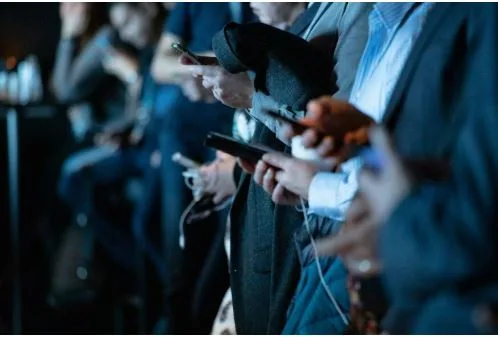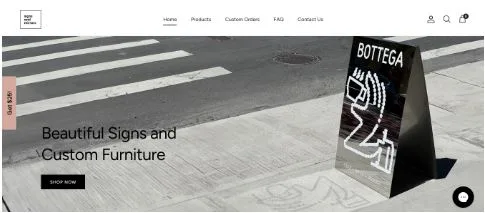How Newsrooms Are Using Social Media Signals to Amplify Story Reach
Funny thing about newsrooms: for decades, they were obsessed with wires, press releases, and the classic “scoop.” Now? They’ve got one eye on Twitter (or X, whatever we’re calling it this week), one ear on TikTok sounds, and another hand—probably the intern’s—scrolling Reddit threads. That’s not just procrastination. It’s survival.
Because here’s the truth: the biggest indicator of whether a story will travel isn’t how polished it looks on page one—it’s whether the internet is already whispering, or shouting, about it.
From Newswires to Newsfeeds
Once upon a time, editors sat waiting for Reuters or AP to spit out a headline. Today, the “wire” is a trending hashtag, a meme gaining momentum, or a five-second TikTok clip with thirty thousand comments.
When The Guardian or The Times spot a spike online, they don’t shrug. They pivot. Headlines get tweaked, push alerts sent, and suddenly you’re seeing the same subject everywhere you scroll. It’s not coincidence—it’s choreography.
What Counts as a Signal?
Not every like or emoji is a green light. There’s a hierarchy.
- Likes and shares? That’s surface-level.
- Speed—how fast a post catches fire—is the real tell.
- Sentiment—are people cheering, mocking, furious? Tone matters.
- Amplifiers—who’s sharing it? Random users or people with reach?
- Platform quirks—TikTok trends, Instagram carousel saves, YouTube Shorts explosions.
Think of these as weather patterns. A few clouds don’t mean rain. But when the sky darkens and the wind shifts, you grab an umbrella.
Turning Noise Into Strategy
Signals are raw noise until someone interprets them. Inside newsrooms, it usually looks like this:
- Listening. Tools—CrowdTangle, TweetDeck clones, AI dashboards—scrape the feeds.
- Framing. Editors ask: is this just a fleeting joke, or does it tie to something bigger?
- Acting. Once it passes the sniff test, teams move fast: commission a quick story, package the headline with trending phrases, blast it where audiences already are.
That’s how a meme about Bernie Sanders in mittens becomes a front-page think piece in less than a day.
Real Examples That Prove the Point
- The BBC literally built BBC Trending, an entire desk that covers what’s buzzing online.
- The Washington Post’s TikTok team makes goofy, sharp videos that explain politics through trending audios—half news, half performance art.
- Small local outlets lurk in Facebook groups or Nextdoor, picking up neighborhood chatter before bigger papers catch wind.
The lesson: newsrooms don’t just observe online life—they mine it, package it, and reflect it back with authority.
Why Social Beats Old-School Analytics
Pageviews, bounce rates, time on page—they’re like looking in the rearview mirror. Useful, but the car’s already moved.
Social signals? They’re headlights. They show you where people’s attention is about to go.
A spike in shares doesn’t just say “this was popular.” It says, “this conversation is building right now.” And in a business where speed is everything, that split-second advantage is gold.
Virality Isn’t Random. It’s Networked.
We like to imagine that things “go viral” because they’re great. Nope. They go viral because they hit the right node in the right network.
One person with influence shares, then another, then their audience snowballs it. That’s how the GameStop stock story on Reddit leapfrogged into national news.
Creators know this already. Post at the wrong time? Dead on arrival. Catch a trend at the right second? Suddenly you’re reaching people you didn’t even know existed.
What Small Players Can Steal From This Playbook
You’re not The New York Times. But the same rules apply when you’re a solo creator or running a tiny brand account.
- Watch comments like a hawk—if people latch onto a phrase, repeat it in your next post.
- Don’t fight platform currents—join the trend, don’t resist it.
- Mirror the language your audience uses. Nobody Googles “synthetic companions,” but they sure search “AI girlfriend.”
- Think distribution, not just creation—slice one story into a tweet thread, a Reel, a LinkedIn post.
Simple idea: pay attention to signals, then build your own amplification loop.
The Unequal Playing Field—and Why Social Proof Matters
Here’s the rub. Newsrooms have scale. Built-in reach. Paid staff to ride these waves. You? Probably not.
That’s why “credibility signals” matter. Early likes and comments don’t just boost ego—they tell algorithms, “hey, this has momentum.”
Using trusted social growth platforms can help strengthen those early engagement signals—boosting visibility across Instagram, TikTok, and YouTube before organic traction takes over.
They’re not about faking celebrity. They’re scaffolding. A way to give content the nudge it needs to stand up in feeds so actual humans have a chance to notice it.
Think of it as jump-starting a cold car. You still need fuel and an engine. But without that initial spark, you’re not going anywhere.
The Three Levers Everyone Pulls
Whether you’re CNN or a guy selling coffee mugs on Instagram, the mechanics are the same:
- Timing. Don’t post when the wave has crested—get in just before.
- Framing. Use the words, sounds, and imagery your audience is already primed to notice.
- Amplification. Make sure enough eyeballs see it early so algorithms push it further.
Miss one lever, and your story struggles. Nail all three, and you’ve got a shot at takeoff.
The Danger of Ignoring Signals
If you ignore signals, you miss the story. Period.
Wall Street laughed at Redditors until GameStop nearly broke the system. TikTok teens spotted shortages months before economists mentioned them. Newsrooms that sat on the sidelines? They looked out of touch.
For creators, ignoring signals means pouring hours into posts nobody engages with. And once momentum is gone, you don’t get it back.
The Next Phase: AI as Signal Detector
Here’s what’s brewing: AI models layered on top of dashboards, predicting not just what’s trending now, but what’s about to trend tomorrow.
Imagine knowing that a TikTok meme will hold through the weekend—or that a Reddit thread has the bones of a week-long story. For small players, that kind of foresight could be the difference between being early and being invisible.
Newsrooms are already testing it. The tools will eventually trickle down. And when they do, the line between “big outlet” and “scrappy creator” gets thinner.
So, What’s the Takeaway?
Social media signals aren’t noise. They’re the rhythm of the crowd.
Newsrooms ride that rhythm to push stories further than their own mastheads ever could. You, too, can pay closer attention—catch the whispers, frame your message, and get it in front of the right people.
Because in the end, reach isn’t about who shouts the loudest. It’s about who hears the echo first.






